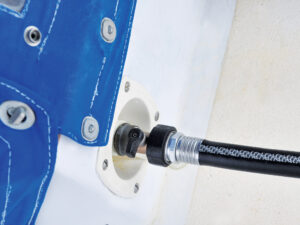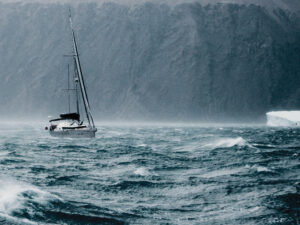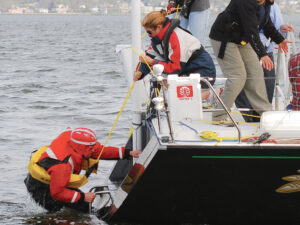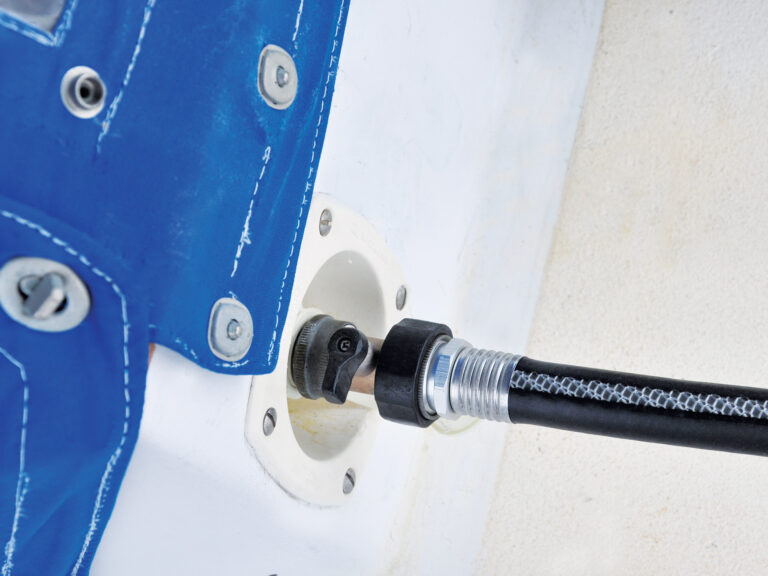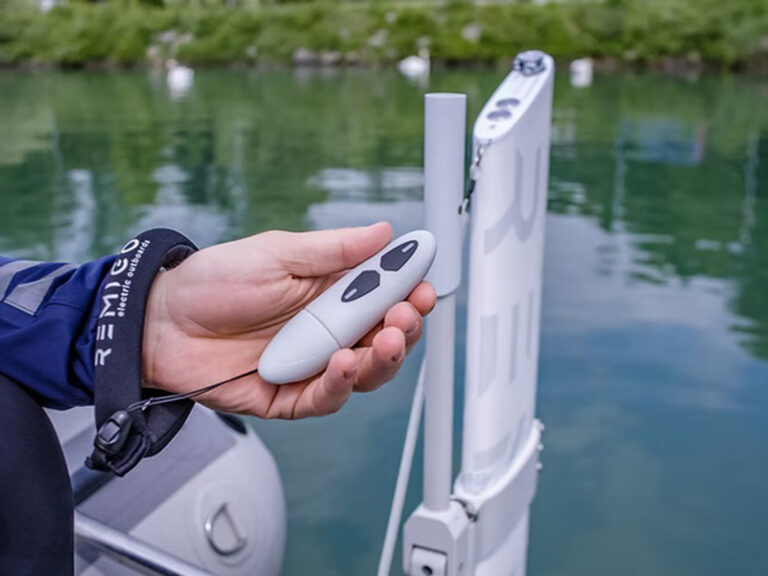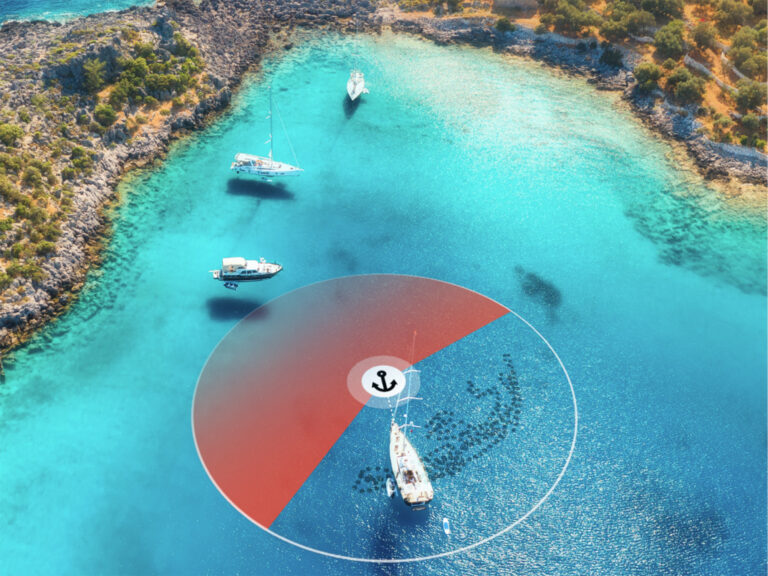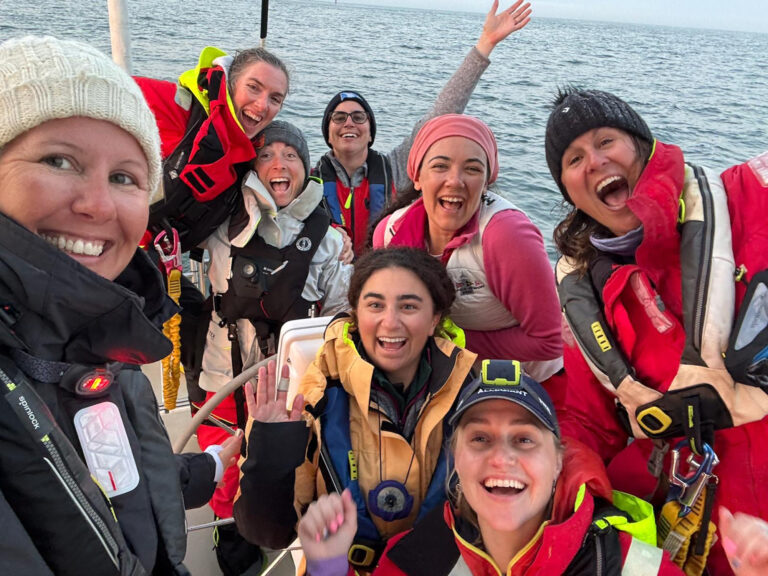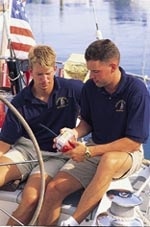
CW_0212_RN03.jpg
Early on December 29, 1997, a Cal 34 named Morning Dew struck a submerged jetty outside Charleston, South Carolina, ending the lives of four people. In the years since, the maritime community has pondered the state of its safety equipment, especially communications systems, personal flotation devices, and EPIRBs. Unfortunately, few have focused on the seamanship exhibited early that morning by Morning Dew’s crew, which comprised a sailor named Michael Cornett, his two adolescent sons, and their 14-year-old cousin. Cornett’s hastily assembled plan was to deliver his boat 300 miles from Little River, South Carolina, to Jacksonville, Florida, by way of the Intracoastal Waterway. But they ended up “outside” in the ocean, during the broadcast of small-craft advisories, where sometime after midnight they struck the submerged north jetty outside Charleston harbor. Strong tidal currents and cold water claimed the lives of all aboard, but not before one of them transmitted a garbled VHF Channel 16 call to the Charleston Coast Guard station, and a crewmember on a commercial vessel in the area reported hearing cries of help from the water. The Coast Guard was accused of not properly following up on these two leads, and has since lost a $19 million court case, but things went wrong well before the vessel foundered. An inexperienced crew, a poorly prepared vessel, and adverse weather conditions were all factors that led to one of the most tragic losses of life in recent sailing history.
A hotly debated question is whether or not a better system for monitoring and tracking VHF distress calls would have changed the fatal outcome. An honest answer is “Maybe.” What is definite, however, is that had Cornett had the right charts and the proper navigation equipment—no GPS or Loran was aboard, and the accuracy of the compass hadn’t been checked—and Morning Dew had carried safety gear such as a life raft or an EPIRB, the story might have had a different ending. But while the right safety gear can save the day after things have gone wrong, planning is better focused on avoiding trouble before it comes. I’ve reviewed my own close calls at sea as well as those of others, and it’s become clear that while fate stalks all sailors and their craft, it’s more likely to overtake the ill-equipped and underexperienced among us.
Getting Ready
The process of gearing up to go to sea should include a strong training component as well as a taste of actual open-ocean sailing. Whether experience is gained by signing up at a competent sailing school, by working on the pitching deck of a boat belonging to an experienced friend, or is self-taught through incremental exposure, the goal remains the same: the development of boathandling skills and the acquisition of the collective knowledge known as “good seamanship.” Safety at sea is also hitched to gear acquisition, but it’s a mistake to assume that these devices can offset a vessel’s shortcomings. Your boat is your most important safety asset, and skimping on its readiness so you can afford a top-of-the-line life raft is like buying airbags for your car instead of new tires.
Crew competency is another primary factor in safe voyaging, and that encompassing phrase includes such skills as sailhandling, navigation, and systems awareness as well as the crew’s physical fitness and preparedness for sea. Prioritizing your cruise preparations is also essential. A hardcore raceboat skipper and dear friend once told one of his fellow competitors obsessed with wet sanding the bottom of his boat that for every hour spent polishing, he should spend 10 hours on the helm. The same advice holds true for the cruiser buying safety gear: If he or she hasn’t practiced the Quickstop maneuver or used a Lifesling, the value of that equipment is diminished.
With the above in mind, let’s prioritize your safety-gear shopping list. First, take a look at the who, what, when, and where that will define your cruising plan. This is a minimal-risk analysis that weights such factors as sea and weather constraints, vessel structure and stability, the crew’s experience, and the duration of the voyage. In short, those headed shorthanded for a stint in the Southern Ocean or a peek at Greenland need to upgrade their safety gear several notches above sailors getting ready to gunkhole in the Bahamas.
Let’s start with a look at what can go wrong. The man-overboard issue has haunted sailors since boats were first launched. Today, we recognize that preventing sailors from going over the side in the first place is even more important than being able to execute a competent recovery. To that end, harnesses and jacklines, effective nonskid, strong handrails, and a deck layout that’s easy to negotiate are all important. Some falsely assume that a good double set of lifelines alone will keep crew on board. In truth, this wire-rope railing is placed at the outer limits of the vessel’s deck and can be both the cause of someone going over the side as well as his or her last chance for a handhold. It makes much more sense to reach inboard to a substantial handrail securely fastened to the vessel’s coachroof.
All too often, those getting ready to set sail on their first big passage find themselves buying and installing equipment at the last minute. Procrastination like this leads to a departure with unfamiliar equipment and a flawed assumption that if something does go wrong, the right solution for the problem is aboard. Just as storm sails and beefier ground tackle require practice to be used correctly, all the orange safety gadgets have a learning curve, too.
Communications
In an emergency situation, when it appears that the safety of the boat or crew may be compromised, the first step is to contact an appropriate search-and-rescue group—you should identify this coordinator before you leave. Once you’ve made contact, advise it of your location, your situation, and your needs. This is not a Mayday call; it’s a risk-assessment statement and can be done via VHF, SSB, or a satellite-communication system. The new Global Maritime and Distress Safety System communications protocol may make implementing distress calls easier, but the system isn’t up and running just yet. The key issue is to file a clear float plan before you head out.
The 406 EPIRB is a distress beacon monitored by satellites with global coverage, and through international cooperation, it links search-and-rescue services worldwide. Some regions have superior air and sea rescue capabilities, while these assets may be meager in some parts of the developing world. This means that the same-day rescues off the U.S. coastline may not be the status quo around the world, which is another reason why abandoning ship should be the very last resort.
Raft Rethink
The life raft is the most expensive item on the safety list, and if some regulatory bodies have their ways, the price, weight, and canister size will grow even larger. In an effort to make rafts even safer, the International Organization for Standardization (ISO) and the International Sailing Federation (ISAF) are upping requirements for structure and stability as well as recommending such features as boarding platforms. Today, offshore life rafts come equipped with various supplies, which include such bare essentials as signal flares, bailers, and food and water. But what about the other tools vital to survival on a raft, such as watermakers, handheld VHFs, and EPIRBS? There’s debate between standards setters as to whether all portable supplies should be in a grab bag separate from the raft or packed in the raft itself.
Up until now, recreational-craft life rafts have been built to manufacturers’ specs, and trends toward double chambers, better ballast bags, and more efficient canopies have improved these products. Such rafts are specified for lighter duty than the Safety of Life at Sea (SOLAS) rafts carried by inspected commercial vessels, but they’re a fair compromise, especially when it comes to having a raft that’s small enough to be effectively stowed and easily deployed. “Roomy” isn’t a term that often appears in life-raft brochures. In fact, the standard 2-foot by 2-foot space allocated for each person is a tough squeeze at best. Many cruisers buy rafts that will accommodate at least one more crew than they plan to take.
Crew-Overboard Gear
All too often, gale-force conditions cause seas to pluck items like horseshoe buoys and Lifeslings from their pulpit perches. Crewmembers who were washed overboard and recovered in the recent Newport-Bermuda Race reported that inflatable crew-overboard devices blew away before they could reach them. Add poor visibility to the mix, and you can see why having each crewmember take personal responsibility for staying tethered to the vessel in severe conditions is so vital. Harnesses and jacklines play a key role in this process, and to that end, many inflatable PFDs manufactured these days have built-in safety harnesses. Some say this gear complicates working on deck, but if crews spend time familiarizing themselves with the extra strings and straps before heavy weather sets in, they’ll find the constraints far less objectionable.
Keep It Simple
When asked about the perceived dangers they face at sea, experienced sailors will often list the things least likely to occur, such as being swept over the side by a rogue wave or striking a submerged container. Few focus on the more likely scenarios, ones in which they’re smacked by the boom, burned in the galley, or grounded on a rocky ledge—despite the marvels of modern navigation equipment. Avoiding these events is all part of the safety equation, and risk mitigation is your effort to turn the odds in your favor. It all starts by recognizing that your vessel itself is your primary piece of safety gear, and when it comes to improving your odds for survival, it’s best to look closely at your first line of defense.
CW technical editor Ralph Naranjo holds the Vanderstar Chair at the U.S. Naval Academy and served for two years as chairman of the US Sailing Safety at Sea Committee.

